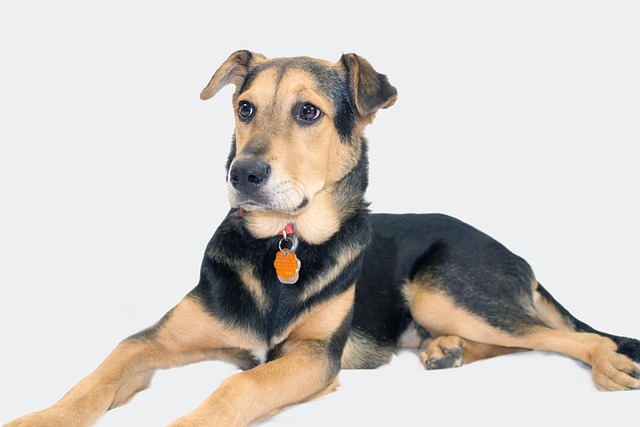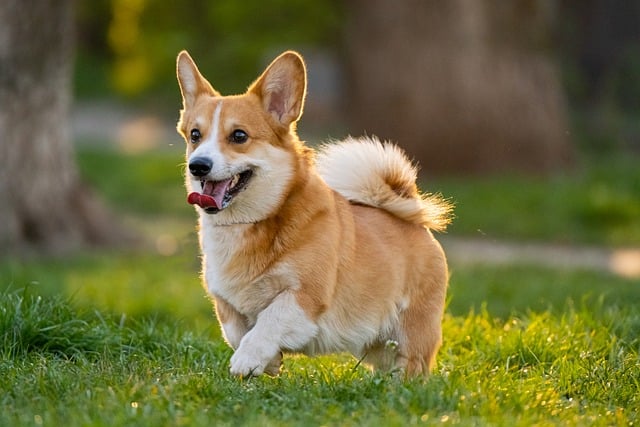
How to potty train an old dog?
Potty training an old dog takes patience more than speed—unlike puppies, adult pups have established habits, so rushing can make them anxious.
Dogs bring us irreplaceable joy during our days together. Watching dogs rush to their food bowls with anticipation should be a heartwarming moment, but the scene of the food bowl being overturned and food spilling all over the floor makes this beauty mixed with helplessness. The behavior of dogs overturning food bowls may seem simple, but there are actually complex reasons behind it. As dog owners, we are full of hope to find effective ways to let dogs eat safely and say goodbye to the trouble of frequent cleaning.
Part of the reason why dogs overturn food bowls is closely related to their nature. From an evolutionary perspective, when dogs survive in the wild, they often need to use their claws to dig and search for food. This ancient instinct is deeply imprinted in their genes. Even now in the comfort of their homes, when faced with food bowls, some dogs will subconsciously use their claws to dig around the food bowl, inadvertently causing the food bowl to overturn. In addition, dogs have very different personalities. When lively and active dogs eat, their vigorous energy is difficult to suppress, and their excited movements can easily affect the food bowl. Moreover, the characteristics of the food bowl itself cannot be ignored. If the food bowl is too light or the bottom design is not stable enough, it is like a building with an unstable foundation. The dog may fall to the ground with a slight touch.
When a dog overturns the food bowl, we should give full understanding and tolerance. The dog is not deliberately making trouble, but just following instincts and habits. At this time, you must not scold loudly immediately. Harsh scolding will confuse and frighten the dog, casting a shadow on the originally pleasant eating process. What we have to do is to guide them with patience and gentleness to help them establish correct eating habits.
Choosing the right food bowl is an important part of solving the problem. The ideal food bowl should have a wide bottom, thick material and non-slip characteristics. The wide bottom can provide more stable support, and the heavy material increases the weight of the food bowl, making it not easy to be easily pushed over. For example, ceramic food bowls are sturdy in texture, and the non-slip pads at the bottom can firmly adhere to the ground, greatly reducing the risk of being overturned. Stainless steel food bowls are also a good choice, durable and easy to clean. For large and strong dogs, the weighted food bowls designed for them on the market take their strength into full consideration. They are more solid and heavy, and can withstand the larger movements of dogs when eating.
 Creating a quiet and comfortable eating environment for dogs is also crucial to reduce the overturning of food bowls. Dogs have keen senses when eating. If the surrounding environment is noisy, or there are frequent people walking around, the TV volume is too loud, and other disturbing factors, they will become uneasy, and then their movements will be disordered and flustered during eating, increasing the chance of overturning the food bowl. We can carefully select a quiet and relatively closed space for dogs as a dining area, such as a quiet corner of the room, away from the door, living room and other places with frequent traffic and noise. In this quiet space, dogs can concentrate on enjoying food, greatly reducing the possibility of overturning the food bowl due to external interference.
Creating a quiet and comfortable eating environment for dogs is also crucial to reduce the overturning of food bowls. Dogs have keen senses when eating. If the surrounding environment is noisy, or there are frequent people walking around, the TV volume is too loud, and other disturbing factors, they will become uneasy, and then their movements will be disordered and flustered during eating, increasing the chance of overturning the food bowl. We can carefully select a quiet and relatively closed space for dogs as a dining area, such as a quiet corner of the room, away from the door, living room and other places with frequent traffic and noise. In this quiet space, dogs can concentrate on enjoying food, greatly reducing the possibility of overturning the food bowl due to external interference.
For the behavior of dogs scratching around the food bowl due to their nature, scientific training can be used to correct it. When dogs eat, we need to pay close attention to their actions. Once you find that your dog has raised its paw to scratch around the food bowl, you should quickly stop it in a gentle and firm tone, such as clearly issuing a "no" command. At the same time, in order to let the dog intuitively understand that this behavior is not allowed, you can gently hold their paws and convey your intentions with body language. When the dog is quiet and focused on eating, and does not overturn the food bowl, give rewards in time, such as delicious snacks, gentle caressing or enthusiastic praise. Through repeated reinforcement training, the dog will gradually establish the correct behavior pattern and understand that it should keep quiet when eating and not overturn the food bowl at will.
Changing the dog's eating method is also an effective way to solve the problem of overturned food bowls. Some dogs eat very fast, and the way they eat in a hurry can easily make them lose control of their movements while eating, and then overturn the food bowl. For these "impatient" dogs, slow food bowls are an excellent choice. The unique design of the slow food bowl is designed to increase the difficulty of eating, forcing the dog to slow down the eating speed. For example, some slow food bowls have various protrusions, maze-like passages or obstacles inside, so dogs need to spend more time and energy to cleverly adjust the angle and method of eating in order to eat food. This not only avoids overturning the food bowl due to eating too fast, but from a health perspective, chewing slowly is also conducive to better digestion and absorption of food nutrients by dogs, which is of great benefit to gastrointestinal health.
In the process of training dogs not to overturn the food bowl, it is crucial to maintain patience and consistency. Dogs have different learning abilities and adaptation speeds, and may not be able to fully understand and follow the requirements in a short period of time. Therefore, no matter what the situation, always adhere to the same instructions and training methods. You cannot be strict sometimes and turn a blind eye to the dog's improper behavior sometimes. This inconsistent attitude will confuse the dog and make it difficult for the dog to form stable and correct behavioral habits. Only by persistent and patient guidance and consistent requirements can the dog gradually understand our expectations and eventually develop good eating habits.
Although the dog overturning the food bowl is a small episode in life, it deeply reflects the interaction and communication effect between us and the dog. As the companion and guide of the dog, we have the responsibility to help them develop good living habits and give them endless care and understanding. By carefully selecting suitable food bowls, creating a quiet eating environment, patiently carrying out scientific training, and reasonably adjusting eating methods, we can significantly reduce the number of dogs knocking over their food bowls and make their mealtimes full of warmth and pleasure.

Potty training an old dog takes patience more than speed—unlike puppies, adult pups have established habits, so rushing can make them anxious.

Professional dog trainers typically reach for treats that are small, soft, and incredibly high-value—the canine equivalent of gourmet chocolate.

At first glance, training treats and regular treats might seem interchangeable, but they’re designed for entirely different purposes. Training treats are typically tiny

I leaned against my friend Mia’s New York City apartment counter last Tuesday, watching her rush around grabbing keys—shoulders hunched, jaw tight

Dogs don’t just hear your words; they’re masters at reading your entire physical presence. Thanks to thousands of years of domestication

Many dogs freeze up or bark excessively when they see other pups at the neighborhood park, and this isn’t just shyness—it’s often social anxiety.